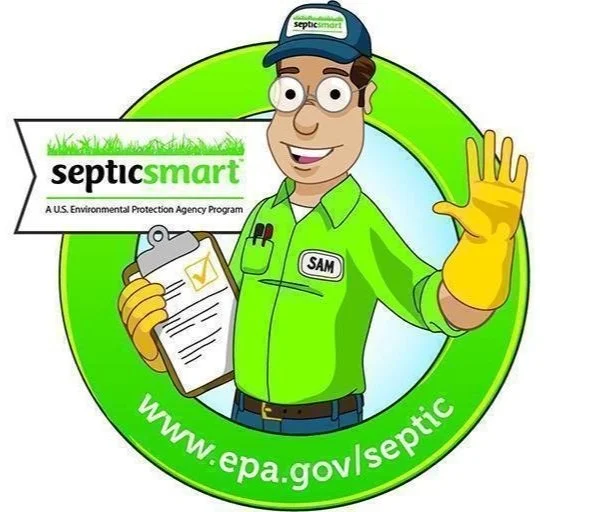ELIMINATE POLLUTANTS
7. Maintain Your Septic System
Maintaining your onsite wastewater treatment system (septic system) not only protects Twin Lakes and nearby groundwaters from being contaminated but also protects your health and your investment in your home.
Typical pollutants found in household wastewater include nitrogen, phosphorus, and disease-causing bacteria and viruses. A properly designed, constructed, and maintained system can provide long-term, effective treatment of household wastewater. If not properly maintained, a failing system can cost tens of thousands of dollars to replace.
A typical septic system has 4 main parts:
A pipe from the home that carries the wastewater into the tank;
A tank that holds the water long enough for solids to settle to the bottom and oil and grease to float to the surface;
A drain field where the water from the tank is discharged;
The soil where the microbes provide the final treatment.
Know the signs of a failed system.
Pooling water or muddy soil around the tank, drainfield, or in your basement.
A bad smell coming from the area of the tank.
Toilet or sink backs up when you flush or do laundry.
Bright green grass over the drainfield.
If you notice any of these signs, call a professional to have your system looked at right away.
Alternative systems
Due to unsuitable soils, high bedrock or groundwater, or small lot size you may have a hard time making a traditional septic system work on your property.
There are alternative systems now available that use new technologies to improve treatment processes, many of which need less space to function.
Such systems use sand, peat or plastic media instead of soil to treat the wastewater. Some of these systems are already being used in our area.
How to Maintain Your Septic System
Regularly inspect your system and pump your tank as necessary. It’s a good idea to have your system inspected every 2-3 years.
If you don’t pump your tank routinely, the solids in the bottom can build up and make their way out into your leach field, clogging it and eventually ruining it. You might not know you have a problem until it is too late and you need a new leach field.
Don’t dispose of household hazardous wastes in sinks or toilets. Avoid paints, chemicals, cleaners, gasoline, oil, or other toxic materials that could kill the good bacteria in your system. Avoid things that can clog pipes, such as diapers, coffee grounds, feminine hygiene products, paper towels, and grease and fat from cooking. Avoid frequent use of a garbage disposal. Normal use of antibacterial products, such as hand soap, is fine but excessive use might kill too many beneficial bacteria in your system and prevent it from working properly. Septic additives are not needed.
Care for your drainfield. Plant only grass or groundcover with shallow roots over or near your drainfield. Deep roots could clog and damage the drainfield. Don’t drive or park vehicles on the drainfield. This could compact soil or damage the pipes. Keep roof drains, sump pump drains, and other surface water runoff away from the drainfield to avoid flooding it.
Use water efficiently. Using less water means less water going through your septic system. This helps it operate properly and reduces stress on your system and the risk of a failure.
Avoid overloading your system with more water than it is meant to handle.
Don’t do multiple loads of laundry all in one day. Spread it out instead.
Don’t drain a hot tub or pool into your tank or over your drainfield.
Some water softeners or filters flush themselves daily. Make sure these aren’t discharging into your system.


